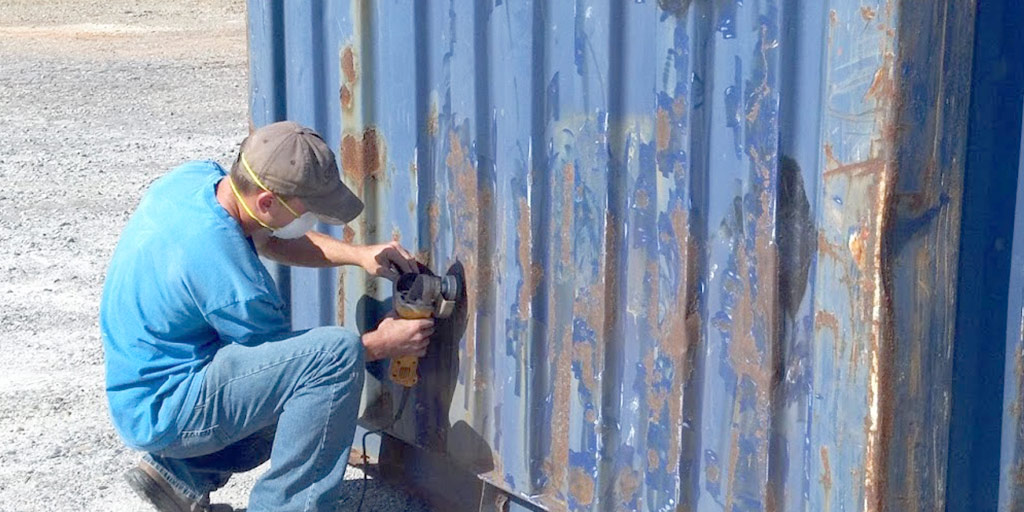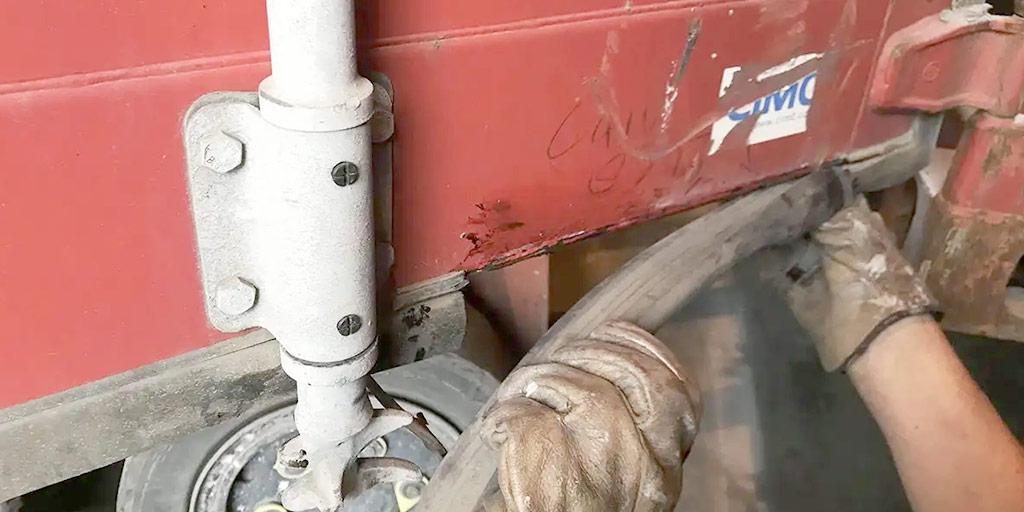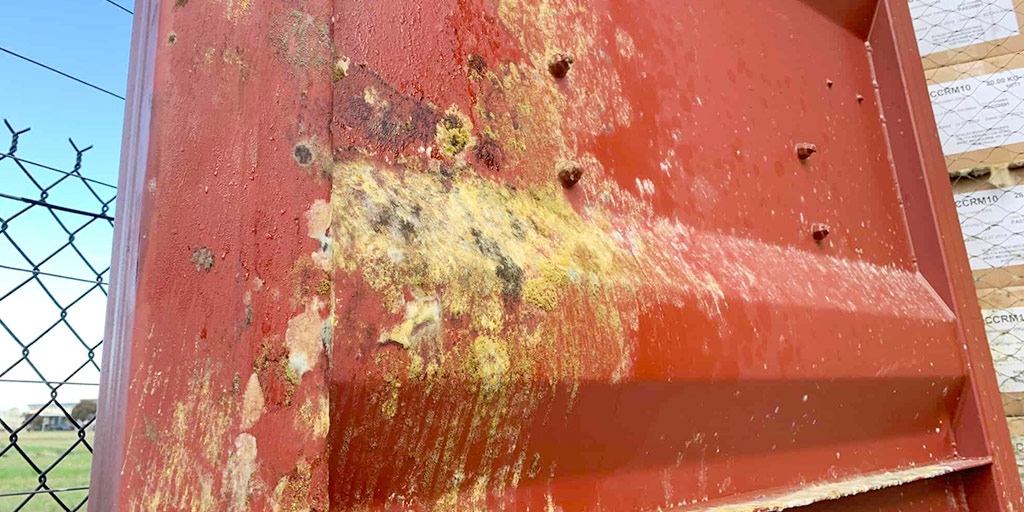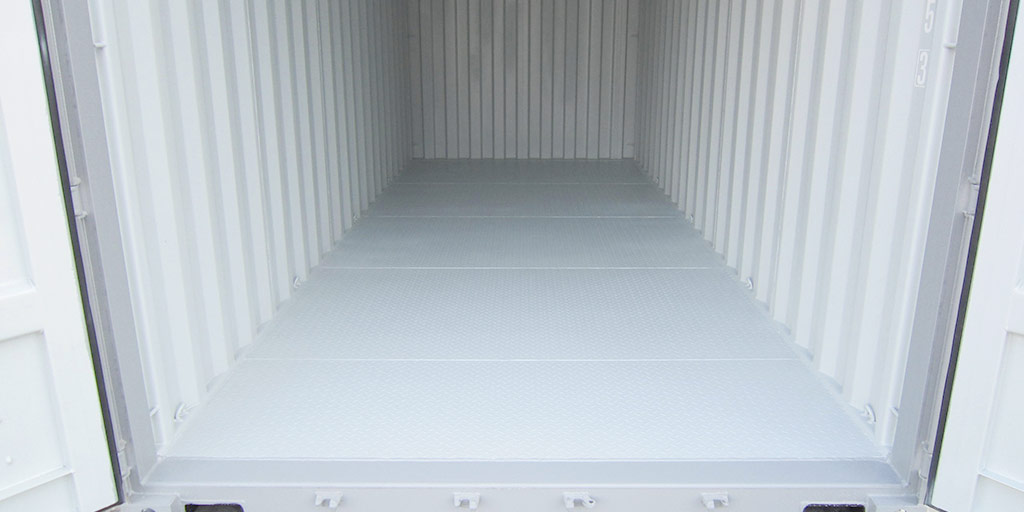Extend Your Container’s Lifetime with These Best Practices
Feb 16th 2022
Why Should You Maintain Your Storage Container?
Shipping containers withstand the rigors of the harsh environment out at sea, keeping its contents safe and secure before moving into a second life as a storage container or building module. From their life at sea to where they are now, they have a typical life span of about ten to fifteen years. However, ongoing proper maintenance on the container can extend its useful life long beyond the predicted years.
Regular container maintenance with inspections and remedial work ensures your storage container and its contents remain in excellent condition. Tackling shipping container maintenance early is easy to do and affordable compared to replacing the entire shipping container or the contents within.
The advantages of maintaining a storage container include:
• Extending its useful life.
• Avoiding costly repairs.
• Ensuring your possessions are protected.
Storage container maintenance involves a little time and effort and the occasional minor expense on repairs but in return you know that you have dry, secure storage for your belongings.
What are the Ways I Can Maximize Its Lifetime?
A regular inspection checking for potential issues means you stay on top of your maintenance and prevent minor problems from growing into a damaging crisis. For example, steel container maintenance means staying alert to corrosion, since all iron oxidizes in the presence of oxygen. When you minimize the opportunities for rust and other potential damages, you maximize the life of your storage container.
The best tips for maintaining a storage container involve paying attention to:
• Location – good drainage and level ground.
• Rust – Spot and deal with it before it becomes an issue.
• Doors – keep your moving parts moving.
• Rubber seals – they have about a ten-year life.
• Modifications – they can introduce potential weaknesses.
• Roofs – need to remain watertight.
• Water damage – from leaks or condensation.
• Floors – since they provide a firm base for storage.
| Keep It on Level Ground | Treat Rust ASAP |
|---|---|
 |
 |
| Ensuring your shipping container is on firm and level ground reduces the need for storage maintenance by minimizing potential issues.
When your storage container is on level ground:
• Doors can open freely without effort. • No pools of water can form around the base. • No uneven pressure on the structure of the container.
If the ground is not level and you need to tug and pull on the doors to open them, you risk damaging the seals, hinges, and general structure. Furthermore, water promotes rust, and you don’t want your shipping container sitting in a puddle encouraging corrosion. If water is unavoidable around the container, tactics like elevating the container will help keep the steel structure out of the water.
Containers sitting on uneven ground are at risk of putting tension and excess pressure on some parts of the frame. This tension could then result in buckling or damage to the sides, floor, and roof. A few minutes with a level to ensure your shipping container is sitting flat on its supports can add years to your container’s life and prevent the need for early replacement.
|
Rust forms when steel is in contact with air or water. It will typically start in an area where the paint is chipped or damaged and can spread underneath the paint coat. A regular visual inspection of the paintwork, looking for dents and rust spots, means you’ll be able to seal and paint small patches before they can grow into holes or leaks.
A simple DIY kit for treating rust on your storage container would contain:
• Wire brush. • Sandpaper. • Cleaning rag. • Vinegar or rust inhibitor. • Paintbrush. • Paintbrush cleaner. • Direct to metal (DTM) Paint – marine grade. When you find a rust patch, simply clean away the dirt and rust with the wire brush and sandpaper. Remove as much of the rust as you can, and then wipe over with the vinegar or rust inhibitor. Let this dry before painting with one or two coats of paint and your container will be good as new! |
| Give Your Doors TLC | Look After Your Rubber Seals |
|---|---|
 |
 |
| Any moving part is prone to wear and tear and maintaining a container means keeping the doors opening and closing smoothly. Grit, dirt, and moisture can hinder the smooth action of your door hinges, and rust can even bind together the metal parts of the hinges, causing them to seize. The hinges, bolts, and locking handles need regular cleaning to remove grit and dirt as well as lubrication to keep them clean, waterproof, and freely moving. Greasing your door hinges will also help to prevent rust and dirt from getting into the hinge. | The seals around the door have a ten-year life expectancy. These rubber seals or gaskets are what help keep your container watertight. When these become worn, damaged, or brittle, they may allow water to get into your storage container, promoting rust and damaging your contents. When this happens, you can either repair or replace the entire rubber seal. |
| Keep an Eye on the Roof | Remove Excess Moisture |
|---|---|
 |
 |
| Out of sight may be out of mind, but your storage container is only as good as its roof when it comes to maintenance. By the time you spot a leak inside the container, it’s already too late and you can suffer extensive damage. That’s why a regular inspection of the roof is essential in container maintenance. Although shipping containers stack together, the corners and edges are weight-bearing, not the roof. The roof of your storage container is not suitable for heavy loads, including walking on top of it.
Don’t be tempted to use the roof for storage and always make sure to remove any debris, snow, or ice as swiftly as possible. Inspect your roof for evidence of dents or other damage as dents in the top will hold a puddle of water, which can accelerate corrosion and result in holes. If you deal with rust and damage promptly, you’ll keep your roof intact and watertight for a long time.
Depending on your climate, location, and inclination, you may consider building a canopy over your storage container. This canopy can provide shade and protection from direct rain, snowfall, and falling debris from trees. Protecting your roof reduces weekly storage container maintenance and avoids the necessity of clearing off snowfall or standing water. |
External moisture can enter the storage container through holes and leaky joins and the internal humidity results in condensation that can drip onto your stored items and result in damage through mold and mildew. You can minimize excess moisture inside your storage container by ensuring that the items placed inside are dry and not leaving container doors open on wet or humid days.
If moisture does enter the container, condensation may drip from the roof (called container rain) but is more likely to run down the internal walls, so don’t store your possessions right against the walls. Having an air gap is preventative measure to avoid water damage to your belongings. You can also use products that absorb moisture from the air, such as absorbent powders or crystals, to clear up excess water inside the container. Alternatively, you can install a climate control unit for sensitive storage, provided you have access to a power source.
Since internal moisture is as effective as rain is in promoting corrosion, be sure to also check the inside for any rust that may form. Routine cleaning and inspection of the inside walls and roof mean you can repair and repaint any problem areas. |
| Check Any Container Modifications | Maintain the Floor |
|---|---|
 |
 |
| Having additional or different doors and windows in your storage container creates potential weaknesses in the new welds and joins. These are areas where you should pay particular attention to for potential leaks or rust damage. Some containers may have internal modifications that use power such as light fittings, extractor fans, or climate control. You can avoid potential repairs by checking vents for dust and blockages and ensuring that the wiring remains intact and replace any components like air filters according to the manufacturer’s instructions.
Modifications with moving parts will require lubrication to keep out dirt and moisture and areas with glass need an inspection for any cracks, chips, or breakdown in weatherproof steals. Calking and weatherproofing may also need regular renewal to prevent potential leaks.
|
Typically, the floor of the shipping container is plywood which provides a robust base to support your stored items. Always check your floor for damage and patch or replace as necessary.
You can increase the waterproofing of the floor with floor paint to ensure that damp plywood does not delaminate, sag, or add excess moisture to the inside of your container.
|
Buy or Rent from Storagecontainer.com
Rent one of our expertly maintained storage containers, and you can relax knowing your stuff is secure in a weatherproofed container. You get a warranty, and a head start on a quality storage container you can easily maintain for dedicated storage for years.
Get A Quote Today

